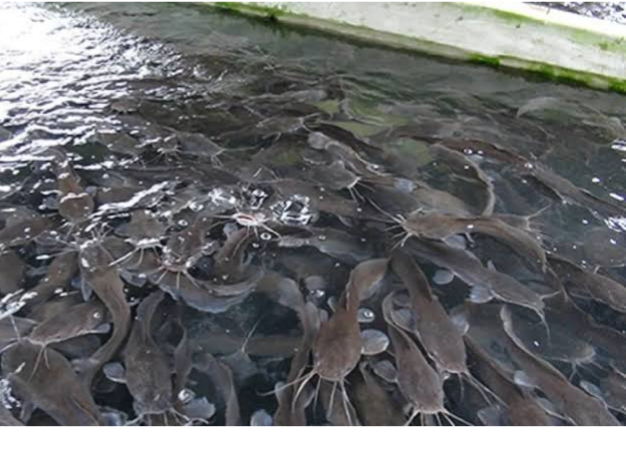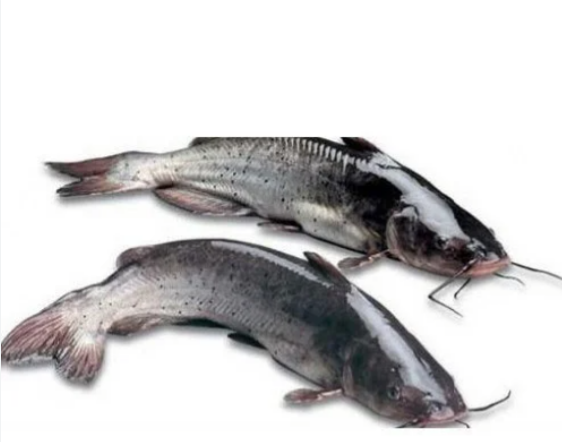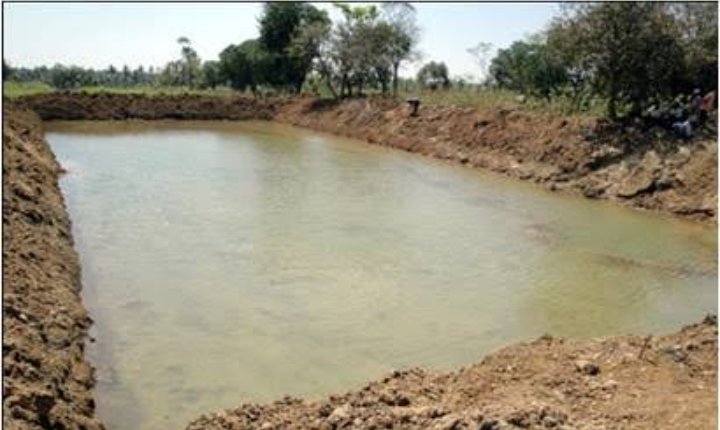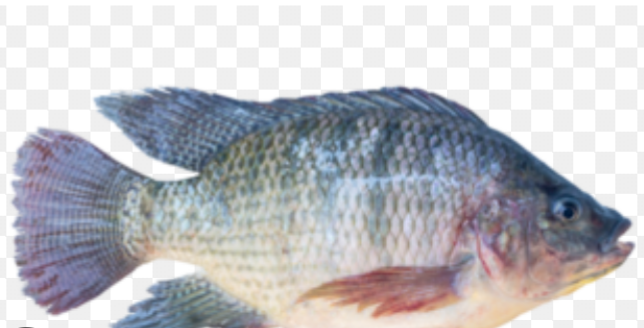
Fish farming.
Nigeria is one of the largest producers of fish in Africa, accounting for about 10 percent of the continent’s total fish production. With several challenges such as lack of modern technology and insufficient finance opportunities, the country fish industry had being faced with a lot of set backs.
Protein is a major food nutrient for human and animals especially the young ones to develop and build their body tissues. Animal protein sourced from meat, egg, and milk cannot meat the need and taste of the human populace. Therefore, alternative protein source is needed to meet their need and change their taste. This can be achieved through fish consumption.
In time past, fishermen only source for fishes in natural water bodies which are sold to consumers. But as the world population increases, global demand for dietary fish protein also increased. Over exploitation of the natural water bodies for sea food resulted in drastic decrease in the aquatic animals. Therefore, people began to raise fish and other aquatic animals in artificial ponds to meet the need of the world.
Fish farming or pisiculture is a type of aquaculture which involves commercial breeding and rearing of fish, most often for food, in enclosures like fish tanks or artificial enclosures such as fish ponds. Aquaculture, is the cultivation and harvesting of aquatic animals such as fish, crustaceans, molluscs etc. For commercial purposes, juvenile fishes hatched from fish eggs in fish hatchery. Worldwide, the most important fish species produced in fish farming are carp,tunas, cod, catfish, salmon and tilapia.

The artificial fish colonies in ponds should be provided with sufficient feeds, protection from natural predators and competitive threats, access to veterinarian service, medication and easier harvesting.
Fish are farmed for human consumption (food), for fish oil, and for fish meal, which is used as feed for pigs and poultry or as fertilizer.
EFFECT OF RAISING FISHES IN ENCLOSURES
The altimate aim of fish farmers is to make profit from their fish farming business. Most fish farmers are less concern about the well being of the fishes they rear. Fishes like livestock also need proper management to survive. Most fish farmers house their fishes in crowded and cramped conditions with little room to move. Fish may suffer from lesions, fin damage and other debilitating injuries. The overcrowded and stressful conditions promote disease and parasite outbreaks—such as sea lice—that farmers treat with pesticides and antibiotics. The use of antibiotics can create drug-resistant strains of diseases that can harm wildlife populations and even humans that eat the farmed fish. Juvenile fishes can be fed upon by adult fish. Also, mixed farming of different fishes might be difficult to practice except with proper consultation with experts in the field of aquaculture.
High stocking densities can result in a significant amount of pollution from fish excrement and uneaten food, which in turn lead to poor water quality high in ammonia and low in oxygen. Fish farms can also attract predators such as birds snakes, and even theft. In Nigeria, most fish farmers losses their fishes during high rainfall when protective measures are not put in place round the pond.
Also, fish pond constructed close to water bodies can bring about great losses. When pollutants from industries, and pesticides from farms etc are washed into such water bodies which are source of water for the ponds, losses can occur on the fishes.
But also, the positive side of raising fishes in ponds is magnanimous. Fishes grow faster, they are easy to manage and harvest. Visitation by veterinary can help a lot in getting massive harvest etc.
THE BENEFITS OF FISH FARMING IN NIGERIA
1. Increased Food Security: fish farming can help reduce the country’s dependence on imported fish. Most fishes sold in the country are imported from foreign countries like China. When fish production and processing industries improve, the country will no longer rely on imported fish and their products.
2. Employment opportunities : The aquaculture industry has the potential to create more than 600,000 jobs in Nigeria. Young graduates, retirees and job seekers can benefit by venturing into fish farming. fish farming does not require large areas of land and can be done in small ponds, unused tanks etc. Very little investment is required to set it up.
3. Improved Health and Nutrition: There are many benefits of eating fish, they are good source of protein, vitamins, minerals, and omega-3 fatty acids. Fish is a healthy source of protein and can help reduce the risk of heart disease, cancer, and diabetes. It is also used in livestock feed compounding to meet the animals protein requirement
4. REVENUE GENERATION :According to data from the United Nations’ Food and Agriculture Organization (FAO), fish is the most traded edible fishery product in the world, with a total value of more than US$89 billion. If Nigerian farmers can increase on their production, fishes might become a huge generation of revenue like the oil sector in Nigeria
5. Environmental friendly : Growing fish in ponds and tanks instead of in the ocean has several environmental benefits. Since fish in ponds and tanks are fed less, they excrete less nutrients, which means there is less nutrient pollution in the environment.
6. Improved Nutrition of Fish: Feed is an important input for sustainable fish production. Generally, fish farmers use commercial feed to meet the nutritional needs of the fish. But with increasing prices of fishmeal, which is made from small fish species and used as feed, fish farmers are looking for cheaper alternatives.
7. Investment: The fish industry in Nigeria is a place where people can invest their money. .. People can set up feed mills where fish meals are of great importance for livestock feed. Also, more aquaculturist now demand for more fish feeds.
Another profitable investment in the Nigerian fish farming industry is hatcheries. Fish hatcheries produce fish fingerlings and eggs for fish farmers. Also, people can invest in technology used in the fish farming industry. For example, water filtration systems, water recycling system, medicines etc which are used in aquaculture.
MANAGEMENT PRACTICES IN AQUACULTURE
1. HOUSING: fish farmers uses different means to raise their fishes. Such are constructed earthen ponds, concreted ponds, aluminium and plastic tanks, etc.

2. FEEDING: Compounded fish feeds are sold in local markets to meet the nutritional needs of the fishes from juvenile to adult stage. These feeds are produced in pellet form and with various sizes and nutrient content based on the size of the fishes.
Source of clean water must be available at the farm as fishes live in water. The water must not be polluted so that enough oxygen (DO) would be available for the fishes to survive.
There are three types of fish food: natural, supplementary and complete feeds
a) Natural food is found naturally in the pond. It may include detritus, bacteria, plankton, worms, insects, snails, aquatic plants and fish. Their abundance greatly depends on water quality. Liming and fertilization, particular organic fertilization, can help you to provide a good supply of natural food to your fish.
b) Supplementary feeds are feeds regularly distributed to the fish in the pond. They usually consist of cheap materials locally available such as terrestrial plants, kitchen wastes or agricultural by-products.
c) Complete feeds may also be regularly distributed. They are made from a mixture of carefully selected ingredients to provide all the nutrients necessary for the fish to grow well. They are usually make inform of pellets which the fish can easly eat and digest. These feeds are expensive to buy.
Fish system of production can be defined according to the type of food given to the fish:
extensive: fish production depends entirely on natural food; this include detritus, bacteria, plankton, worms, insects, snails, aquatic plants and fish.
semi-intensive: fish production depends on both natural food and supplementary feed; more fish may be reared in the pond;
intensive: fish production depends entirely on complete feed, and the stocking rate no longer depends on food availability but on other factors such as water quality.
Fishes should be fed ones in a day. And five times in a week. This is because they have assess to natural foods that would enhance their growth.
3. MEDICATION
It is important for all fish farmers to consult a veterinarian and experts in the fish industry before embacking on fish farming. They will also advise on measures to take and prevent any form of disease outbreak among the fishes. Water is a substance for easy transmission of diseases among organisms. And adhere to every precautionary measures stated by the experts.
4. DETERMINATION OF DISSOLVED OXYGEN IN PONDS
Low dissolved oxygen concentration is recognized as a major cause of stress, poor appetite, slow growth, disease susceptibility and mortality in aquaculture animals. Daily low dissolved oxygen concentration in pond culture systems is a great concern to fish farmers
Dissolved-oxygen levels can be high during the day period, but the fish species are affected by lowest dissolved oxygen concentration during the night.
literature review conducted by scientists had revealed that the growth of fish at different minimum daily dissolved oxygen concentrations is impaire their growth.
The review indicated that at concentrations below 50 percent of saturation, growth rates declined and became progressively less as the minimum dissolved-oxygen concentrations decreased. At a water temperature of 26 degrees-C, freshwater at 50 percent oxygen saturation contains about 4 mg/L of dissolved oxygen. This concentration is probably higher. Realistically it can be maintained in the early morning in most warmwater aquaculture ponds.
FISH FARMING TECHNIQUES
Fish farming technique is how the fishes are raised. They are:
1. Open Fish Farming Technique
The breeding of fish in natural waterways is known as open sea-cage Fish Farming. In various habitats, including freshwater rivers, brackish estuaries, and coastal marine zones, open systems are being introduced. Floating mesh cages of various mesh sizes are used in growing fish in the water bodies
2. Semi-closed Fish Farming Technique
Semi-closed Fish Farming is when a fish species are grown in a pond with water flowing into the pond from nearby natural river. Wastewater is discharged from the ponds into the nearby river. The farm is supplied with new water pumped back into circulation. This system makes the most extensive use of pond systems.
3. Closed Fish Farming Technique
The raising of fish species in raceways, tanks, and ponds is called closed system fish farming. Water is recirculated via filtering processes and returned to the aquaculture system using recirculation technology. This method helps to keep water quality high while minimizing contact with natural streams.
FISH FARMING SYSTEMS
There are two primary types of fish farming systems : the Extensive and Intensive Fish farming systems.
1. Extensive System
An extensive system is built on a semi-natural habitat (for example, existing ponds) with a natural food source for the farmed fish. By “fertilizing” the pond, the system’s food production may be boosted. In addition, stocking the ponds with a variety of species that inhabit different biological niches helps to preserve the system’s natural equilibrium. E.g., tilapia.

2. Intensive System
Closed-circulation tanks or flow-through raceways are common in intensive systems (e.g., trout farming). Floating sea cages, on the other hand, are intense systems that are exposed to nature. These systems have strict controls over oxygen, water purity, and food supply. Water filtration systems in closed-circulation tanks are complicated.
The intensive system is expensive and requires a high level of monitoring and knowledge to manage properly.
HARVESTING OF FISH
Fishes in ponds are usually harvested with harvesting tools based on the size of the pond. Large size ponds require cast nets to harvest the fishes. Fishes in small concreted ponds and tanks can be harvested using scoop net or bag nets.
To harvest the fishes, the pond must be drained off water so that total harvesting can be done unless smaller fishes are not ready to be harvested.
PROCESSING/ MARKETING OF FISH
Fish farmers can sell fish to fishmongers or industries that convert harvested fishes to fish Products. Some fishmongers sell smoked fishes, sun-dried fishes etc. Fingerings are usually harvested and sundries to make fish meals for feed meals.
Fish scales are used for making beautiful ornaments on bags, shoes and to make decoration.
